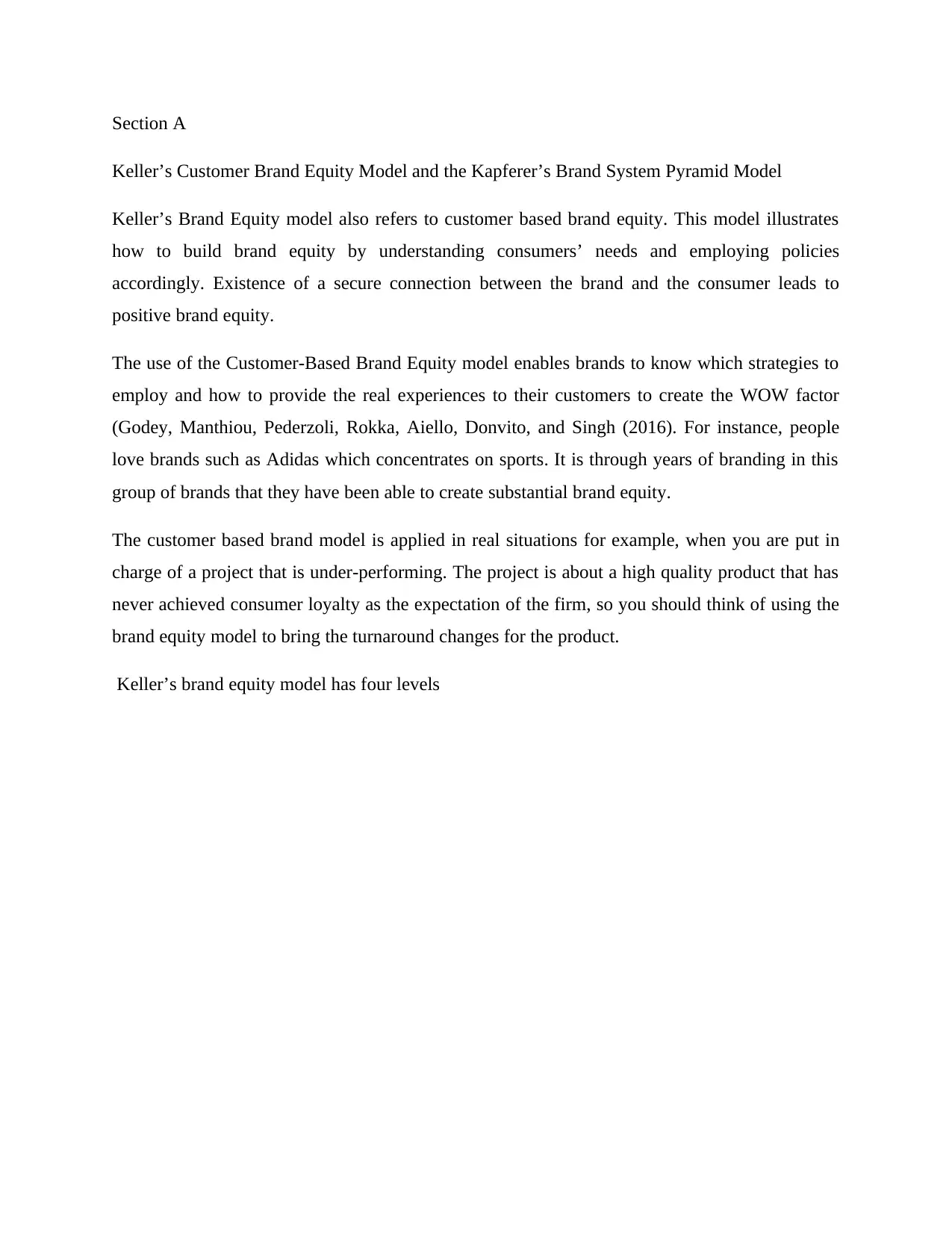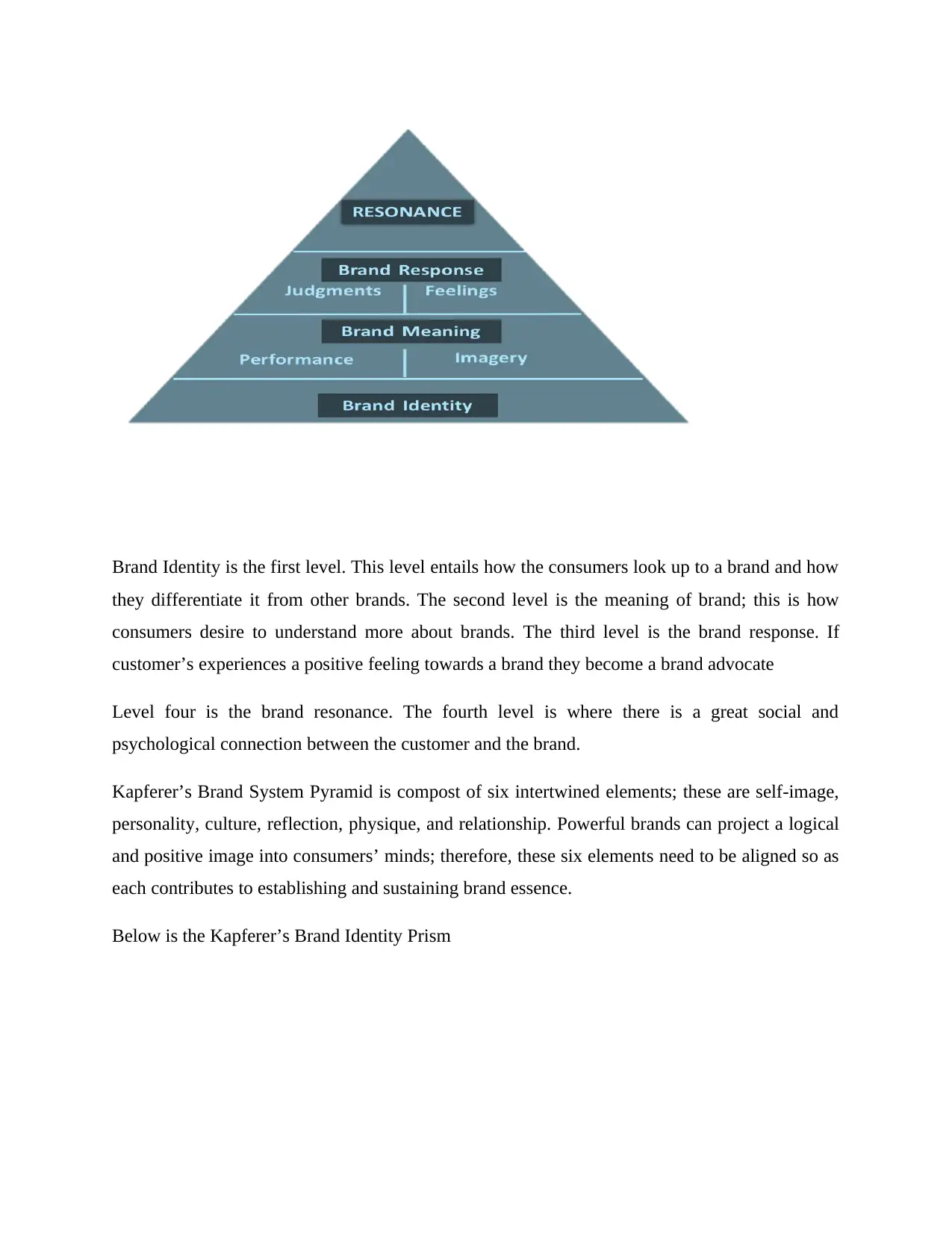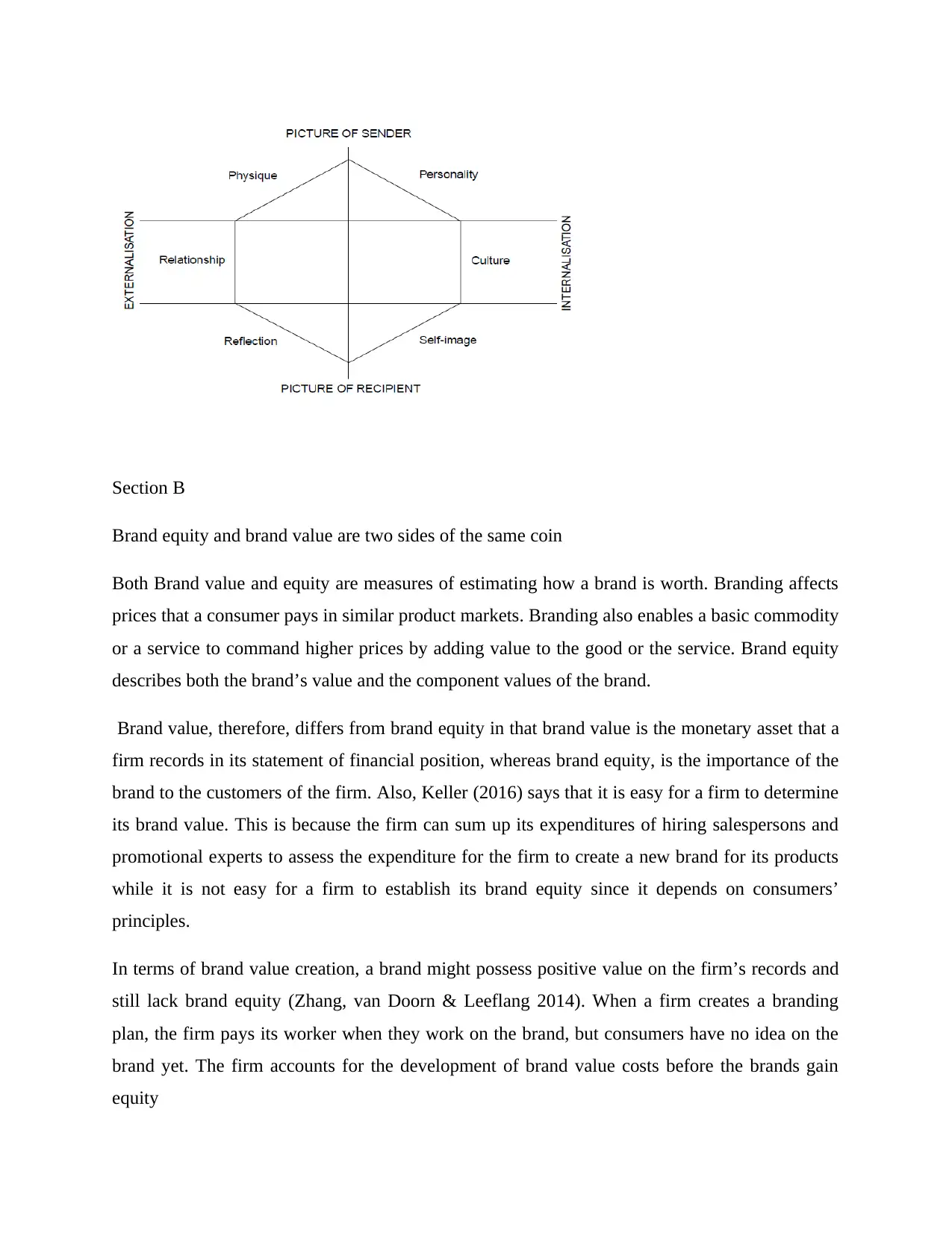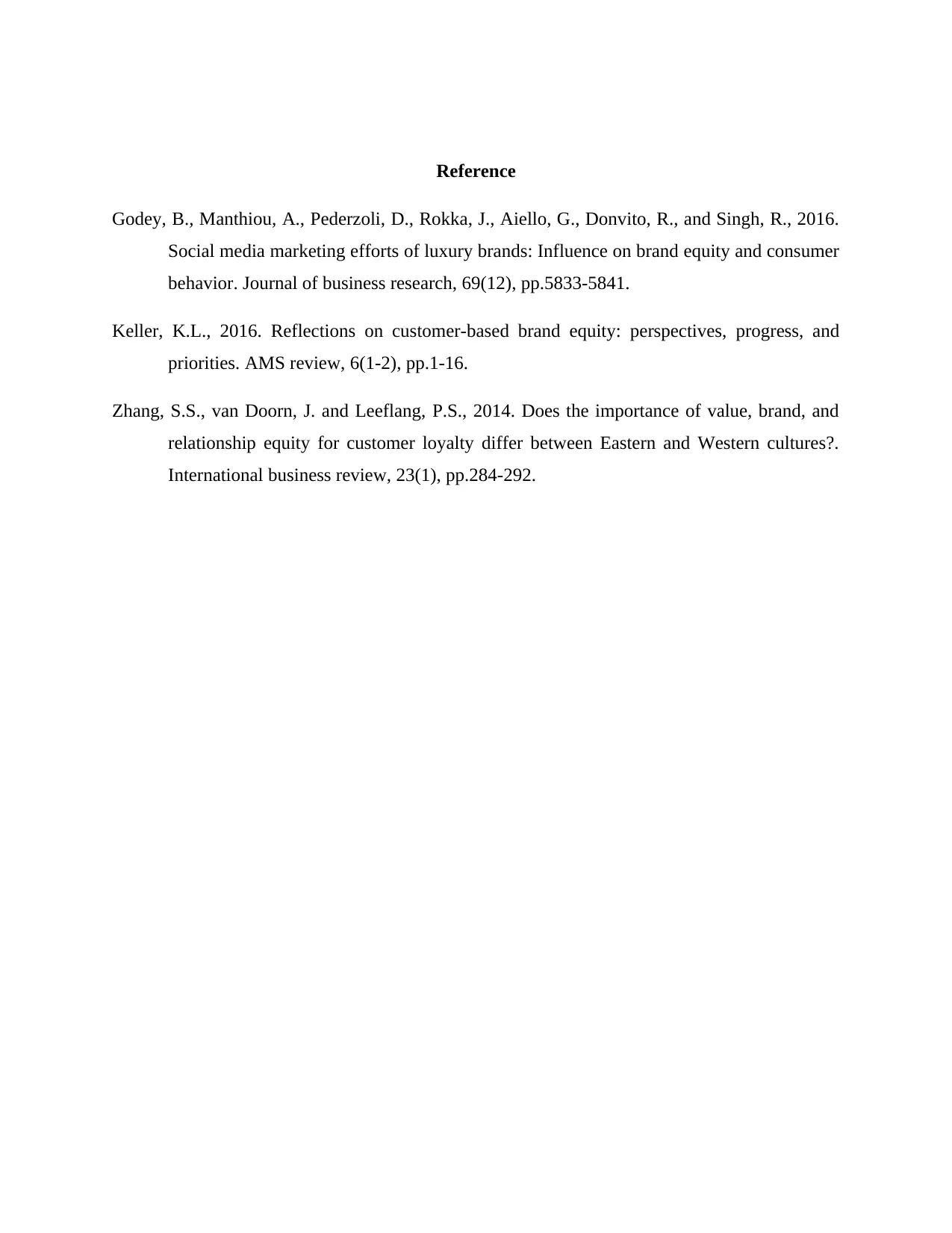Comparative Analysis of Brand Equity Models: A Detailed Report
VerifiedAdded on 2022/11/16
|5
|819
|404
Report
AI Summary
This report examines brand equity through the lens of Keller's Customer-Based Brand Equity model and Kapferer's Brand System Pyramid. It begins by explaining Keller's model, detailing its four levels: brand identity, brand meaning, brand response, and brand resonance, emphasizing how brands can build strong consumer connections. The report then introduces Kapferer's Brand Identity Prism, which includes self-image, personality, culture, reflection, physique, and relationship. The report further differentiates between brand equity and brand value, highlighting that brand value is a monetary asset on a firm’s financial statements, whereas brand equity is the importance of the brand to customers. It uses examples and references to support its analysis, providing a comprehensive understanding of brand equity and its strategic implications for businesses. The report also touches on how firms account for brand value creation costs before brands gain equity.
1 out of 5










![[object Object]](/_next/static/media/star-bottom.7253800d.svg)